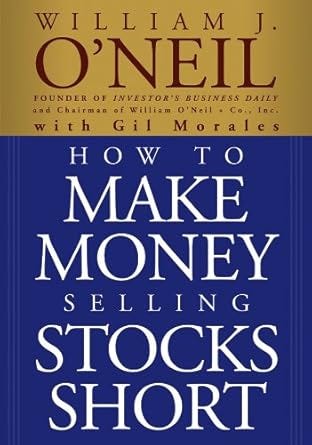There are two sides to everything, except the stock market. In the stock market, there is only one side—the right side. In certain market conditions, selling short can put you on the right side, but it takes real knowledge, market know-how, and a lot of courage to assume a short position. The mechanics of short selling are relatively simple, yet virtually no one, including most professionals, knows how to sell short correctly.
In How to Make Money Selling Stocks Short, William J. O’Neil offers the information needed to pursue an effective short selling strategy and shows you—with detailed, annotated charts—how to make the moves that will ultimately take you in the right direction. From learning how to set price limits to timing your short sales, the simple and timeless advice found within these pages will keep you focused on the task at hand and help you trade with the utmost confidence.
Here are the key lessons from How to Make Money Selling Stocks Short by William O’Neil:
Understanding Market Trends: Before short selling, it’s crucial to understand the market’s overall trend. O’Neil emphasizes that you should only consider shorting stocks in a bear market or when the market is showing signs of weakness.
Identifying the Right Stocks to Short: Not all stocks are good candidates for short selling. O’Neil advises looking for stocks that are overvalued, showing signs of weakness (such as poor earnings or declining prices), and are likely to drop further.
Timing Is Critical: Timing is essential in short selling. O’Neil suggests waiting for a stock to hit a “pivot point” where it begins to break down and shows clear signs of weakness before taking a short position.
Set Clear Exit Points: One of the key strategies in successful short selling is knowing when to exit. O’Neil stresses the importance of setting price limits and stop-loss orders to minimize potential losses if the stock moves against you.
Risk Management Is Key: Short selling involves high risk, so managing that risk is vital. O’Neil recommends using proper risk control techniques, such as limiting the size of short positions and using stop-loss orders to protect against large losses.
Use Volume and Price Action for Confirmation: O’Neil teaches that you should use volume and price action as confirmation before entering a short position. A stock’s price decline with high volume often signals that the downward movement is likely to continue.
Be Prepared for Volatility: Short selling can be volatile, as stock prices can quickly reverse. O’Neil advises short sellers to be prepared for market fluctuations and to act quickly when necessary to protect their positions.
Focus on Strong, Overvalued Stocks: O’Neil suggests targeting stocks that have strong, persistent uptrends but are becoming excessively overvalued, as these are more likely to experience significant drops when the trend reverses.
Keep Emotions in Check: Emotional discipline is crucial when short selling. O’Neil emphasizes the importance of sticking to your strategy and not allowing emotions such as fear or greed to influence your decisions.
Learn from Mistakes: Every trader will experience losses, especially when short selling. O’Neil encourages traders to learn from their mistakes and continuously improve their short selling techniques based on experience.











